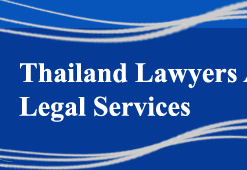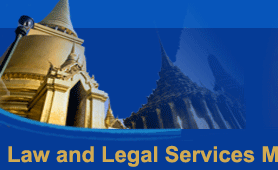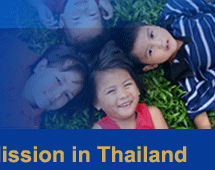



    |
|
| |
|
Framework Agreement on the ASEAN Investment Area (AIA)
Dr. Lawan Thanadsillapakul
The Opening up of Investment under AIAIn the AIA for the first time ASEAN grants National Treatment to both ASEAN investors and all other investors(37). However, ASEAN investors will be granted both NT and MFN treatment (under Arts. 7 and 8), while MFN treatment will not be extended to non-ASEAN investors. Because even though ASEAN has implemented the "Open Regionalism", AIA is still a regional integration agreement. Therefore, in principle, it confines the preferences provided under AIA only to member countries, as this can waive the MFN treatment on the ground of Art. XXIV of GATT. Thus MFN will not be extended to non-ASEAN investors, except such investors meet the criterion to be regarded as an "ASEAN Investor", as such non-ASEAN investors can be entitled to all preferences provided under AIA. And this is the main thrust of the "Open Regionalism" where both regionalisation and generalised liberalisation are reinforced and balanced. (In other words, if MFN treatment is generally and unconditionally granted to non-ASEAN investors, AIA is not a regional integration arrangement but it is just a general investment liberalisation, part of globalisation).
AIA attempts a combination of model 4 and 5 (discussed above) by extending NT and MFN to ASEAN investors first and then extending NT to non-ASEAN investors by the year 2020. However, MFN is only extended to the ASEAN-based investor (meeting the criterion of "ASEAN Investor") not to non-ASEAN investor directly. Thus a transitional phase approach is used from one model to another(38). Moreover, the implementation of NT is subject to a 10-year differential between ASEAN investors and non-ASEAN investors. Therefore, it is clear that ASEAN investors are given priority. All industries [subject to the temporary exclusion list (TEL) and the sensitive list (SL)] are to be opened for investment to ASEAN investors immediately, and to non-ASEAN investors, although not until the year 2010(39). However, NT/MFN treatment and opening up all industries for investment are also subject to the exceptions in the TEL and SL(40), as well as other exceptions under Art. 13 (General Exceptions), Art. 14 (Emergency Safeguard Measures), and Art. 15 (Measures to Safeguard the Balance of Payments).
The removal of restrictions or control on foreign investment is done by extending national treatment to the admission, establishment, acquisition, expansion, management, operation, and disposition of investment (AIA Art. 7(1)(b)). Previously, such regulations on screening and restricting entry and establishment were extensive in the ASEAN investment regime. Under AIA, the ASEAN countries committed themselves to "progressively reduce or eliminate investment regulations and conditions, which may impede investment flows and the operation of investment projects in ASEAN"(41) and not to create any new restrictions. Restrictions, which still remain, under the TEL and SL, are also subject to the stand still and roll back principles(42). With the commitment to the stand still and roll back principles, ASEAN countries bind themselves not to create new restrictions, and to progressively eliminate existing regulations that impede investment flows or restrict foreign investment.
The combined NT/MFN treatment model with a negative list of exceptions implemented under AIA still allows ASEAN countries to maintain negative lists, which may be provided under their existing legislation. Even though ASEAN countries have deregulated and eliminated much of their investment controls, they still reserve some crucial strategic industries, indigenous and cultural industries, mostly for national security, health, public, cultural and safety reasons. This approach recognises that certain areas may be beyond the scope of liberalisation. However, ASEAN countries have to submit their TEL and SL to the AIA Council within 6 months after the date of signing the agreement and the TEL shall be reviewed every 2 years and progressively phased out by the year 2003(43). Therefore, most industries reserved on TEL will be opened by the year 2003 and the SL will be reviewed by 1st January 2003. The AIA Council may decide a further review of the SL so that all negative lists might be lifted.
Also separate Short-Term Measures to Enhance the ASEAN Investment Climate(44) provided special privileges and measures for accelerating investment liberalisation (discussed above). This includes a suspension of laws regulating equity joint venture between foreign and local enterprises and 100% foreign equity is now allowed(45). Laws restricting foreign shareholders in national companies are also deregulated(46). However, since the 100% foreign equity and other special privileges granted in the short-term measures are not set as permanent measures, they are subject to change and may alter in the future or be extended depending on later circumstances.
Consider from the models suggested by UNCTAD (discussed above), the AIA agreement may be considered to be a hybrid model, as it binds ASEAN member countries to grant mutual national treatment to ASEAN investors and then to extend NT to non-ASEAN investors later, by the year 2010. Mutual national treatment involves a greater commitment to full liberalisation among member states aiming at attaining regional integration, in order to offer a larger geographical area within which globally competitive industries can be established. Under mutual national treatment, the right of entry and establishment are offered to investors located in member states that either possess the nationality of such state and/or are resident for business purpose in a member state. The aim is to establish a common regime for entry and admission for investors from member states (UNCTAD, 1999: 17). ASEAN countries also extend the combined NT/MFN treatment to ASEAN investors. This means ASEAN countries commit to offer each other NT and MFN treatment, whichever is more favourable to investors from any member country, at pre-entry and post-entry stages of investment. The aim is to widen entry and establishment rights as far as possible, to enable investors from other ASEAN countries to obtain the same rights of access as the national or most-favoured third country investor. Under AIA (Art. 8) "any preferential treatment granted under any existing or future agreements or arrangements to which a Member State is a party shall be extended on the Most-Favoured Nation basis to all Member States". Therefore, any advantages accorded to third parties, either under existing or future agreements will be extended to all ASEAN countries. However, any ASEAN country can confer special treatment or advantages to adjacent countries under growth triangles and other sub-regional arrangements between member states(47), which need not be extended to others under the MFN requirement.
Consequently, implementation of AIA based on mutual NT and combined NT/MFN treatment is enhancing intra-ASEAN liberalisation or regional integration while it encourages the inflow of foreign investment from outside the region. Therefore, a combined model is implemented in AIA: NT/MFN treatment is initially granted to ASEAN investors until the transitional period elapses, then NT is granted to non-ASEAN investors. This reflects the transitional approach in investment liberalisation of ASEAN, firstly prioritising intra-regional investment liberalisation, and later closer integration with the world.
_______________________________________________________________
(37) Art. 4 (b) of the Framework Agreement on the ASEAN Investment Area provided that "national treatment is extended to ASEAN investors by 2010, and to all investors by 2020, subject to the exceptions provided for under this Agreement;". However, the ASEAN Leaders agreed to accelerate the time frame: See Bold Measures. Section 6.1.3.3 above.
(39) Art. 4 (c) of The Framework Agreement on AIA provided that "all industries are opened for investment to ASEAN investors by 2010 and to all investors by 2020, subject to the exceptions provided for under this Agreement;" The time frame for opening industries for investment to ASEAN investors was accelerated from 2010 to 2003. See Bold Measures above.
(40) Art. 7 (2) of the Framework Agreement on AIA provided that "Each Member State shall submit a Temporary Exclusion List and a Sensitive List, if any, within 6 months after the date of signing of this Agreement, of any industries or measures affecting investments (referred to in paragraph 1 above) with regard to which it is unable to open up or to accord national treatment to ASEAN investors. These lists shall form an annex to this Agreement. In the event that a Member State, for justifiable reasons, is unable to provide any list within the stipulated period, it may seek an extension from the AIA Council".
(41) Art. 3 of the Framework Agreement.
(42) For instance, the TEL and SL that need to be gradually eliminated and phased out are mostly the restricted industries previously closed to foreign investors.
(43) Initially the time frame for phasing out the TEL was set in the year 2010 but was later accelerated to the year 2003. Section 8 of the Statement on Bold Measures. See http://www.asean.or.id/economic/invest/sum_bold.htm.
(44) Section 33 of the Hanoi Declaration provided that "As a step to enhance ASEAN's investment and trade environment, a package of bold measures and privileges will be granted to traders and investors. In this regard, we ask our Ministers to commence implementation of the package of bold measures starting from 1st January 1999". The Statement on Bold Measures, which provides several measures accelerating trade and investment liberalization further provides details of Short-Term Measures To Enhance ASEAN Investment Climate. The Hanoi Declaration was done on 16th December 1998 at Hanoi, Vietnam. On the same day, the Statement on Bold Measures and the Short-Term Measures to Enhance ASEAN Investment Climate were adopted.
(45) Section 6 (ii) Short Term Measures to Enhance ASEAN Investment Climate.
(46) This can be seen from the privatization schemes implemented in ASEAN countries, especially after the crisis, under the supervision and requirement of IMF that come along with the IMF help package. For instance, Thailand has to implement privatization in various national companies, such as Petroleum company, electricity enterprises (Electricity Generation Authority of Thailand: EGAT), and Telecommunication Authority of Thailand. Government allows foreign investors to hold shares in those companies and also allows foreign investors to make takeover bids for the collapsed financial firms that had been taken over by the government after the crisis.
(47) Art. 8 (4) "Nothing in paragraph 1 shall prevent any Member State from conferring special treatment or advantages to adjacent countries under growth triangles and other sub-regional arrangements between Member States".